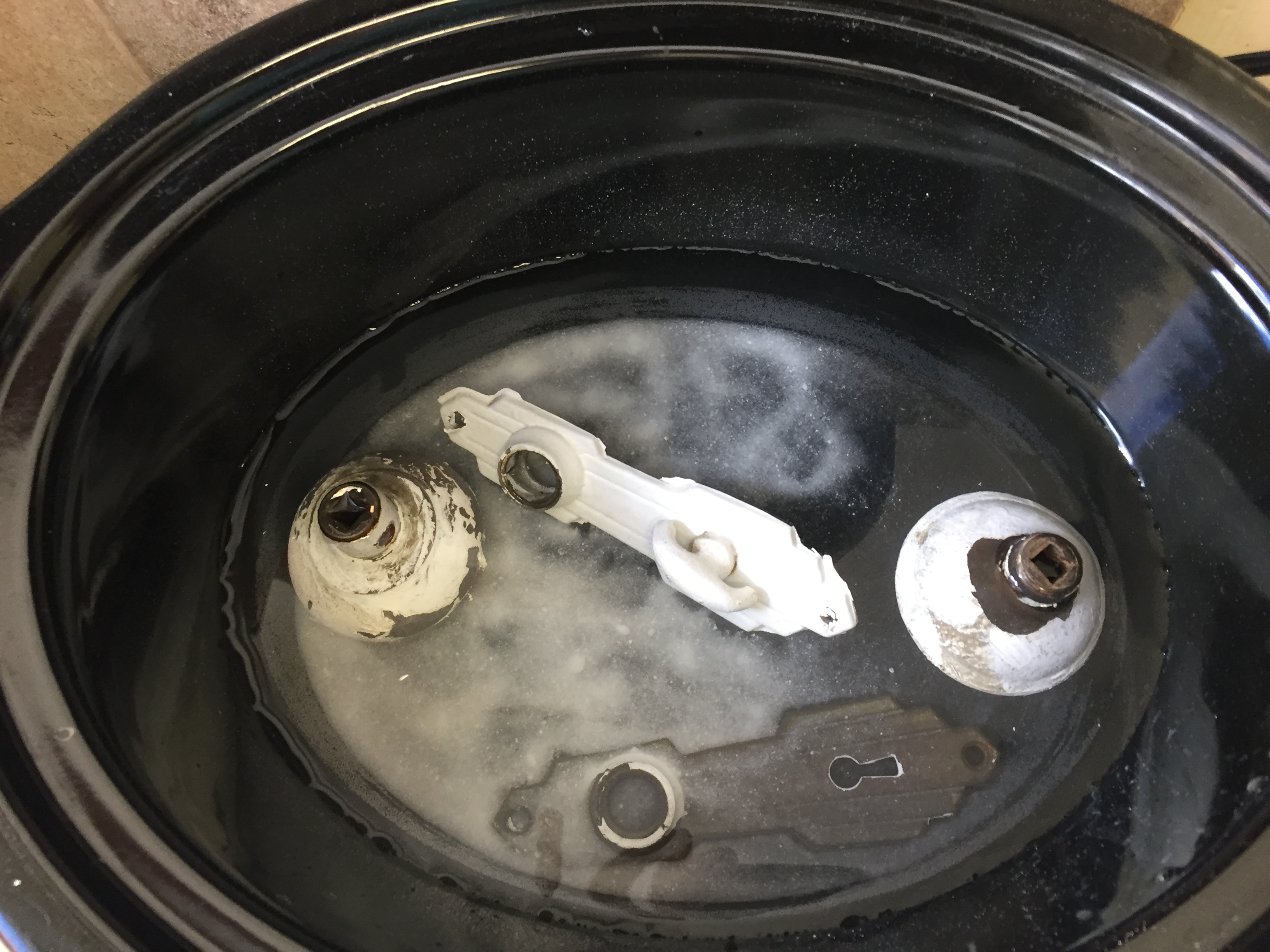Story
Historic Hardware May Help Fight COVID-19
As a preservationist working from home in a 1930s Art Deco apartment building, I have often lamented the fact that so much historic door hardware has been painted over, forever dulling the lovely details that add character and art to our everyday lives. I don’t consider myself an artistic person, so my interest in these seemingly basic details relates to my appreciation of what seems like unattainable creativity on my part.
I also appreciate craftsmanship, and details like decorative door knobs and hinges harken back to a time when finishings in buildings were elaborate, sometimes miniscule, but supportive of the architect’s vision and era it represents. Recently, a news headline reminded me that historic door hardware provides us with scientifically verifiable health benefits as well.
Well before scientists knew of the biocidal properties of copper, civilizations around the world were manipulating it for their benefit. Ancient Egyptians used copper to complete tasks of daily living, including as receptacles for carrying and storing water without it becoming stagnant. Copper’s use in medicine is well documented in the Smith Papyrus, one of the earliest known medical texts. Mayan, Aztec and Inca cultures used bandages soaked in a copper solution to prevent infection after surgical procedures. Systemic infections, as well as eye and skin diseases, were treated with copper by Chinese cultures as early as 3000 BC. Wearing copper jewelry and ornamentation went beyond defining wealth and status; copper was generally considered a therapeutic remedy by ancient civilizations.
Our modern understanding of the health benefits of copper was shaped during another public health crisis-a series of cholera epidemics in Paris in the nineteenth century. Physician Victor Burq discovered that copper smelter workers did not fall ill in the same numbers as the general population. His research during the 1852 epidemic extended back to the 1832 and 1849 epidemics as well. After administering questionnaires that received over 300,000 responses, he concluded that copper provided health benefits to people who worked with the metal, such as foundry workers, jewelry makers, and goldsmiths to name a few. Compared to the general population’s death rate of 3.7 people out of every 1,000, only 45 people who worked in the copper industry died—an average of around 0.5 per 1,000.
In a timely demonstration of how science affects our daily life, a recent article in The New England Journal of Medicine details research completed by the National Institutes of Health, Centers for Disease Control, UCLA and Princeton. Scientists found that severe acute respiratory syndrome coronavirus 2 (SARS-CoV-2) was detectable for up to two to three days on plastic and stainless steel, but only for up to four hours on copper. Copper alters the structure of the virus’s proteins and kills the DNA and RNA inside, effectively inactivating the virus in a matter of hours. The application of this science has great potential to drastically reduce disease transmission and slow the spread of illness.
What does this have to do with historic preservation? In essence, if the historic door hardware in your home or office is made of copper or copper alloys (think bronze, brass, or nickel silver), it is self-disinfecting. Even if the surface is tarnished, the unseen ions are still actively killing viruses all day, every day. If you want to celebrate these artful disease fighters, take a few hours to clean them up. Soaking hardware in an old crockpot set to high (don’t use the same crock for food afterwards) and a mild detergent mixed with water will remove paint in a few hours. If the hardware is covered in lacquer, use a lacquer remover before soaking or polishing. Metal polish will remove tarnish if you want to restore a shiny looking finish. Whether you prefer a shiny, newer looking finish or a darker, more aged look, rest assured these seemingly simple components of your home are also protecting your health, just as they have for decades before.


